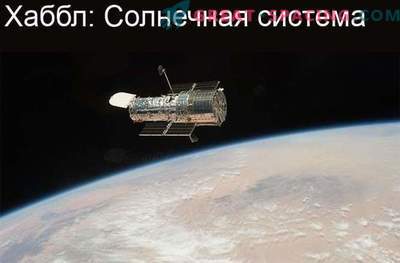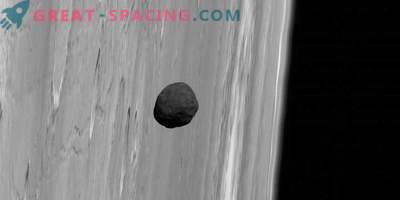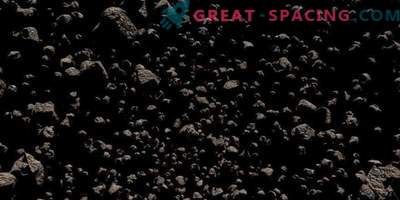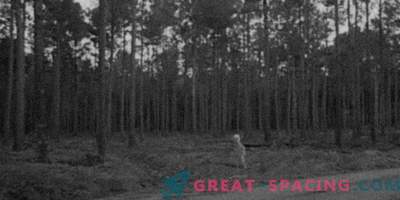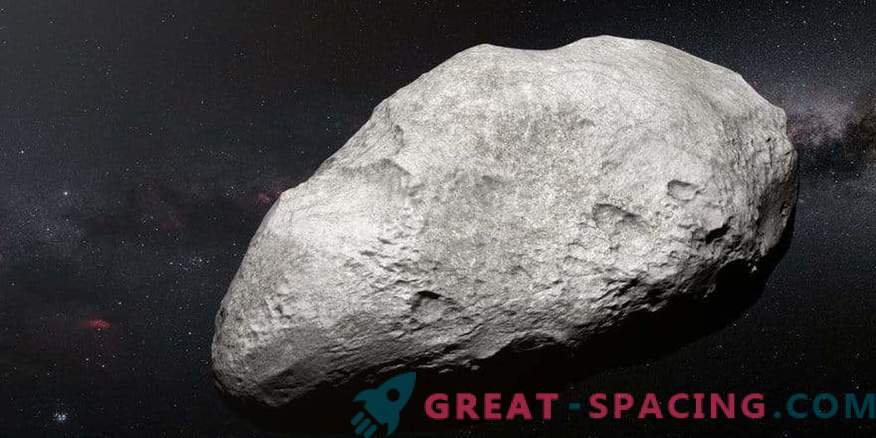
The artistic vision of the ejected asteroid 2004 EW95 is the first carbon-rich asteroid whose existence was confirmed in the Kuiper belt. This curious object is most likely formed in the asteroid belt between Mars and Jupiter. For some reason, migrated to the present point for billions of kilometers from his home
A team of astronomers used telescopes of the European Southern Observatory to study the relics of the original solar system. It turned out that the unusual Kuiper Belt 2004 EW95 object (carbon rich) would be the first confirmed body to reach the cold outer part of the system. Most likely, the object originally appeared in the asteroid belt between Mars and Jupiter, after which it was thrown billions of kilometers from its home.
At first, the solar system was a hellish place. Theoretical models predict that after the formation of gas giants, they plowed through the system, pushing small rocky bodies from the inside to distant orbits. It turns out that the Kuiper belt (the cold territory beyond the orbit of Neptune) must contain a small part of the rocky bodies created in the inner part of the solar system, for example, carbon asteroids. A recent study confirmed the presence of a first carbon-containing asteroid in the Kuiper belt, which supports theoretical models of a restless system. The 2004 EW95 feature was first spotted with the Hubble Space Telescope. The reflection spectrum of asteroids — a specific sample of the wavelengths of light reflected from an object, differed from the spectrum of small Kuiper belt bodies.
For further observation, X-Shooter and FORS2 instruments were used on the Very Large Telescope. The sensitivity of these spectrographs allowed the team to obtain more detailed measurements of the light reflected from the asteroid, and therefore collect data on the composition.
The object is pulled over 300 km, but is located at a distance of 4 billion km, which is why it is difficult to conduct observations. The movement is weak, so I had to use an advanced data processing method to get as many details as possible. Two features of the spectrum corresponded to the presence of iron oxides and phyllosilicates. When taking into account the current orbit, we can say that the object was pushed in the first days of the solar system.
